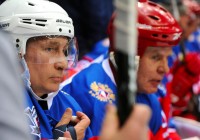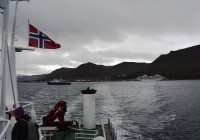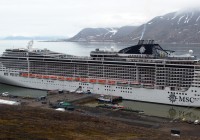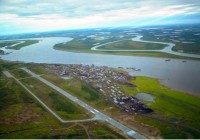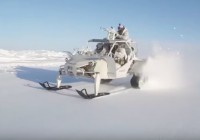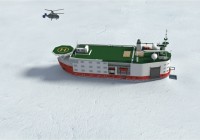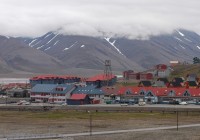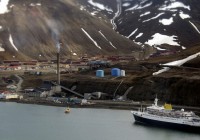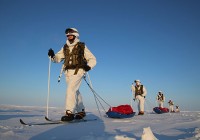
More than 20 bulldozers, one aircraft, and tons of other gear spread around the Arctic seafloor by Russia's ice base
ADVERTISEMENT
Like every year since 2000, polar experts from Russia are making ready for take-off towards the Arctic ice-cap. First, two Mi-8T helicopters will fly north from Siberia via the island of Sredny, Severnaya Zemlya. The onboard crew has one mission: to find a location on the ice near the North Pole suitable to build a landing strip.
The ice should be thick enough to stay safe for about a month before cracking up.
Helicopters and crew for the mission belongs to the Krasnoyarsk based AeroGeo Airlines which has worked with the Barneo camp every season since 2012.
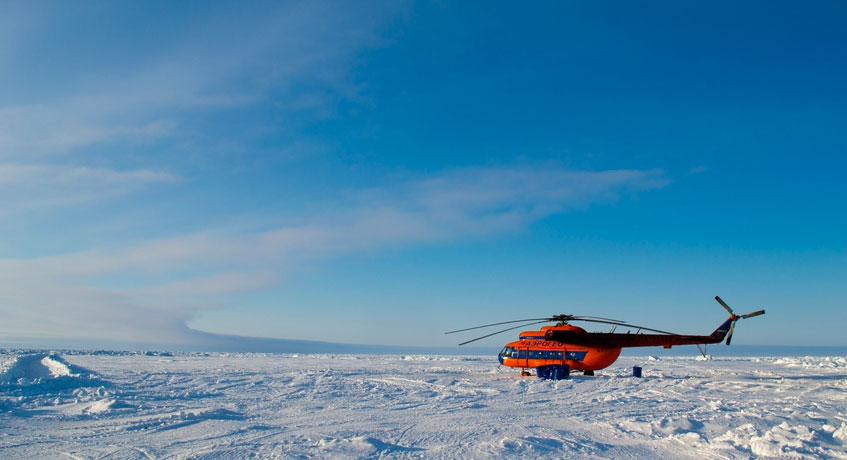
The company informs that the flights for this year are now being planned.
With a range of 900 km, the Mi-8T helicopters need to make fuel deposits on the ice as they fly north searching for a suitable ice floe for the Barneo camp. Then, a larger Il-76 transport plane takes off from Murmansk airport loaded with paratroopers, one or two bulldozers, tents, tons of gear and more fuel barrels.
ADVERTISEMENT
All personnel and equipment are parachuted into the suitable location, normally somewhere at 89°N.
The bulldozers are used to flatten the snow so the An-74 aircraft can start shuttle tourists and scientists between Longyearbyen airport on Norway’s Svalbard archipelago and Barneo.
Longyearbyen is the world’s northernmost airport with commercial passenger flights and are used as a hub to serve Barneo for about a month from late March to late April.
The challenge, though, is the one-way ticket for the larger equipment. The An-74 aircraft is far from big enough to bring back half-empty fuel barrels, not least to talk about one or two bulldozers.
By the end of the season, the bulldozers and other equipment used by the Bareno camp is simply left on the ice. As the ice moves west, and finally breaks up, the bulldozers simply sink to the seafloor.
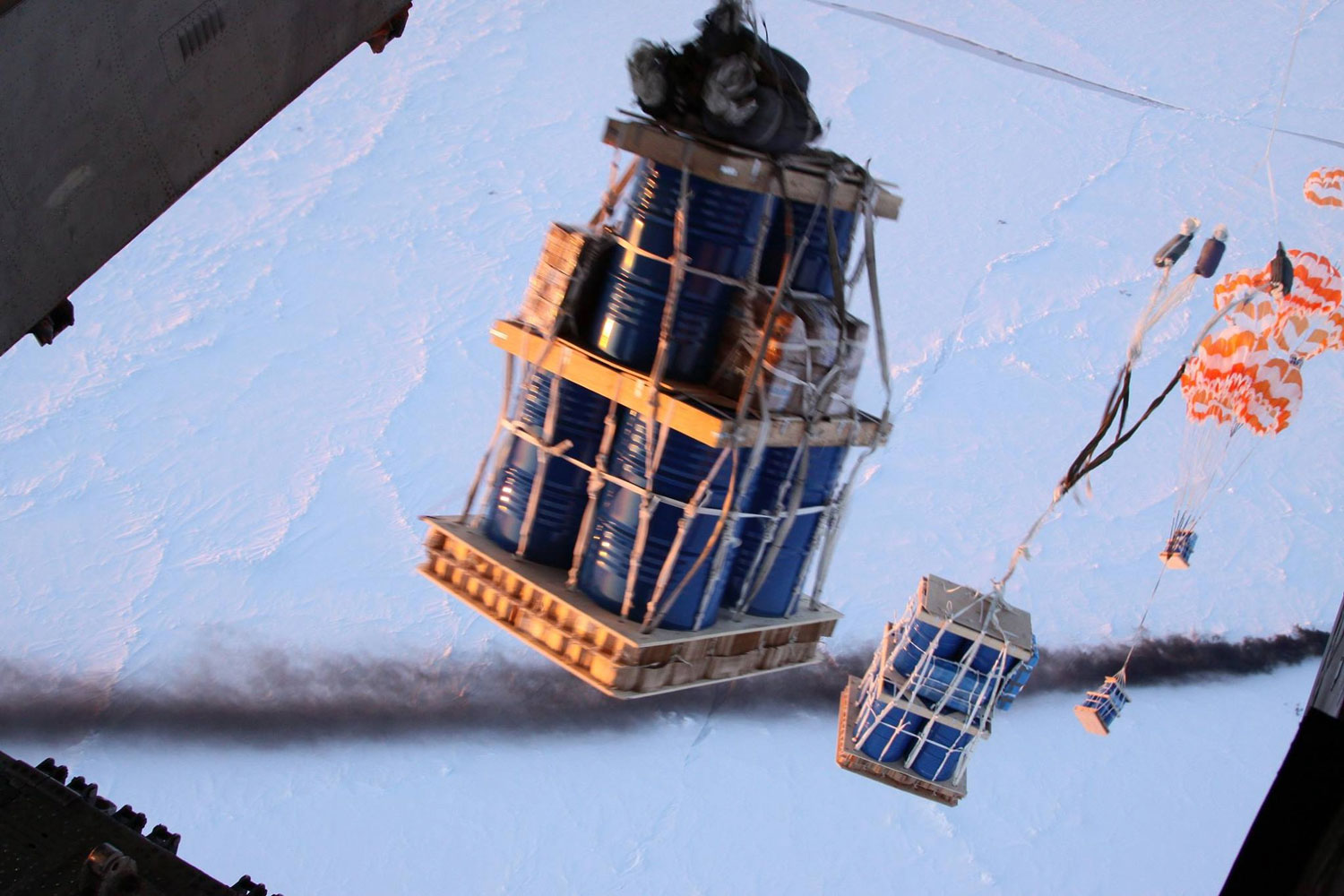
Given 20 years of operations, and one or two bulldozers every year, some 20 to 40 bulldozers have been spread out on the Arctic seafloor which at the deepest is 4,000 meters (12,000 feet).
The Barneo Ice Camp has not replied to questions from the Barents Observer about what happens with the bulldozers and other trash when the camp is abandoned every late April.
The Arctic Ocean is international waters where the 1972 London Convention regulates dumping of waste and other matter. Moscow is a signature party to the convention.
In 1996, the convention was modernized and replaced with the London Protocol. This protocol puts a ban on dumping of harmful materials at sea, but opens for dumping of unharmful materials in ‘circumstances where such waste are generated at locations with no land-based alternatives.’
Aircraft sank in 2015
In 2015, even a plane sank to the seafloor. The An-74 aircraft made a hard landing on the ice floe air strip on April 3rd due to poor visibility. The landing gear was broken and despite attempts to repair, it was not possible to get the plane airborne again.
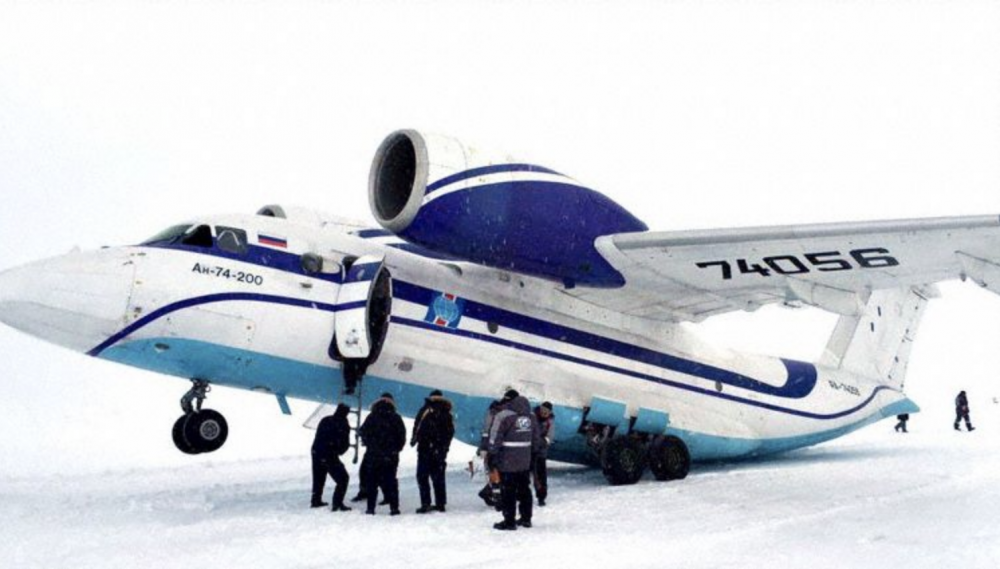
Neither the operator of the aircraft, Shar Ink., nor the Barneo camp itself have publicly told the story about what happened to the aircraft.
A search in database of the Moscow Arbitration Court, though, reviles what later happen. A court ruling from December 2016, dealing with the insurance settlement, informs that the aircraft «sank into the water in the night between July 26 and July 27 2015 as a result of the ice cracking up». The ice floe had then moved to the western Arctic.
Norway, Russia turmoil
In recent years the Barneo camp, and the use of Longyearbyen as logistical hub, has fueled tensions between Norway and Russian on Svalbard.
In 2015, Russia’s Deputy Prime Minister Dmitry Rogozin’s visit to Svalbard on his way to Barneo and the North Pole created diplomatic tensions between Norway and Russia. Rogozin is on EU and Norway’s sanction list against Russia and is consequently a persona non grata on Norwegian soil.
The Norwegian Ministry of Foreign Affairs said that Rogozin’s visit to Svalbard was not illegal, but that it had told Russia that blacklisted persons are not wanted at the archipelago.
In 2016, the ‘Flying Squard’ combat group of Chechen special forces used Longyearbyen airport for transportation of personnel and equipment for an airborne drill close to the North Pole.
The following year, in 2017, Armed FSB Border Guards from Murmansk were exercising at the North Pole with Barneo as base.
In 2018, the campers at Barneo had to pack up and abandon the base only 12 days after its opening due to the ice cracking up.
Last year, the Barneo camp season was cancelled even before it started after the Ukrainian operated An-74 aircraft did not get permission to fly to the high Arctic.
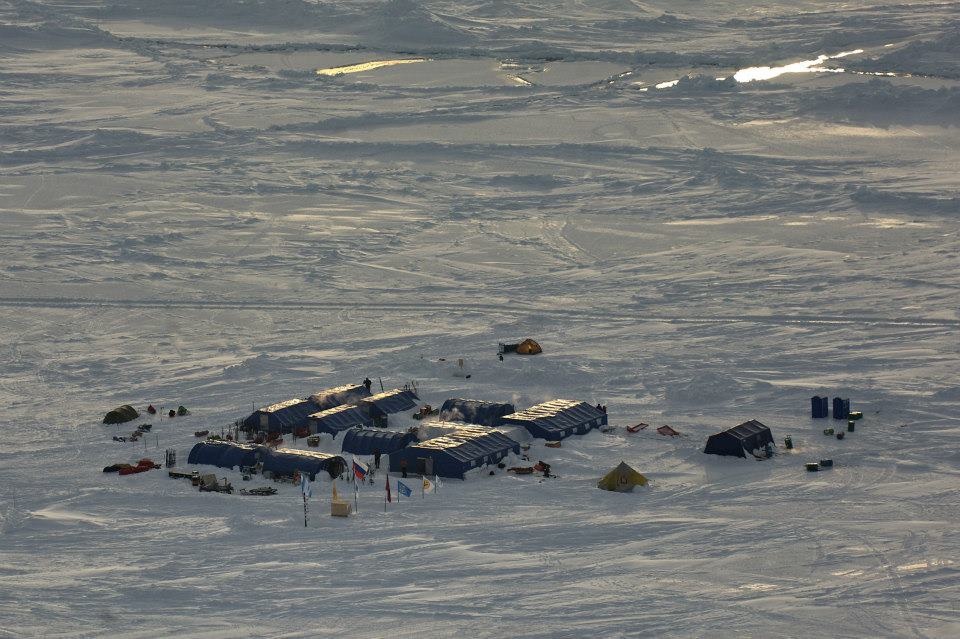
€20,000 for a tour
For the 2020 season, Russian domestic airliner UTair will fly in shuttle between Longyearbyen and Barneo with two An-74 aircraft.
According to the portal of the Barneo Ice Camp, the season is planned to start on April 1 and last until April 30. There are still two days with available seats for polar tourists looking for a North Pole experience.
For the price of €20,000, you can fly from Longyearbyen to Barneo, join the 40 minutes helicopter ride to the North Pole where you can spend an hour before flying back to Barneo, spend a night at the camp and head back to Svalbard.
ADVERTISEMENT
The Barents Observer Newsletter
After confirming you're a real person, you can write your email below and we include you to the subscription list.



